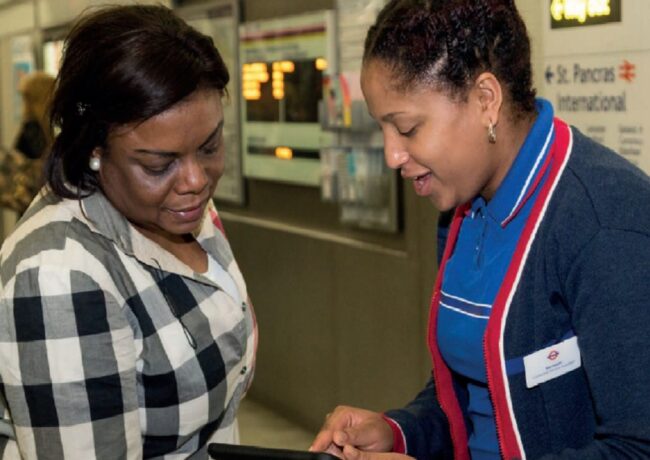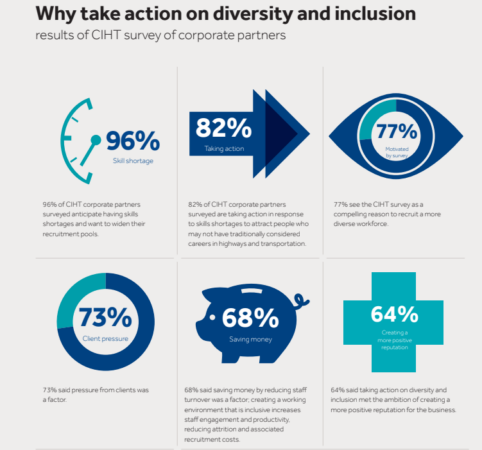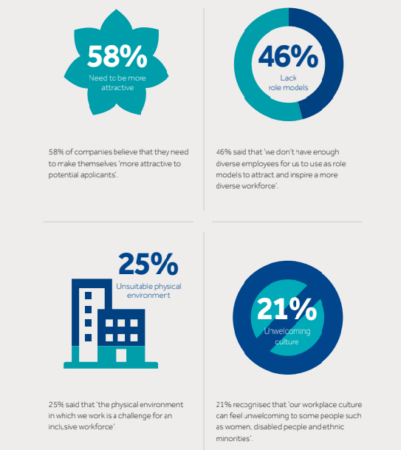Toolkit for a diverse workforce
Whether it is helping people from unemployed backgrounds into employment, or identifying the next female director, there are steps you can take today to start making a difference.
- Profile women and ethnic minority role models: Highlight the positive benefits of having a representative workforce
- Recruit outside family networks: People recruited from the family and friends of existing employees are likely to mirror the current workforce.
- Work with partners: Join forces with local counterparts and professional bodies to help attract employees
- Work with the supply chain: Ask them for their action plans, how are they hiring from BAME communities?
- Target specific groups: Focusing efforts on a specific group has more impact than a scattergun approach
- Promote public speaking and personal development training for all parts of the team, positively promote people in minorities and set aside budgets for training – Women Talk Real Estate and BAME in Property are useful resources. Place North West public speaking trainer Penny Haslam runs courses for panellists, chairs and keynote speakers
- Review the images and language used in marketing campaigns: What message are you giving to potential recruits?
Click on the images to read selected findings from the Chartered Institution of Highways and Transportation’s 2015 report, Routes to Diversity
- Engage with community organisations: Build relationships with local mosques, childcare centres and youth clubs to promote training and work opportunities in the local area
- Review recruitment practices: For example, remove or reduce the requirement for applicants to have a fixed number of years’ experience, which automatically restricts the pool of people who meet your criteria. Recruit for aptitude and attitude instead
- Train your recruiters to remove bias: Make unconscious bias training mandatory for everyone involved in the recruitment process
- Diverse recruitment panels: People tend to recruit in their own image, so do your best to find women and people from minority ethnic backgrounds who can get involved on recruitment panels
- Insist on a diverse shortlist: Make a commitment that, where possible, shortlists must include at least one underrepresented group such as a female candidate
- Challenge your recruitment partners: Hold internal and external partners involved in the recruitment process to account for delivering more diversity in the candidate pool
- Sign up to diversity kitemarks: Examples are the government’s ‘two ticks’ pledge, which offers a guaranteed interview to qualified applicants with a disability
- Promote your commitment: Be explicit about your commitment to diversity and inclusion throughout the attraction and recruitment process. If you do not mention it, people from underrepresented groups may assume you are not interested in them
- Explain opportunities for flexible working and a good work-life balance: Flexible working will help attract men as well as women who are looking for a healthy work-life balance. Set targets for getting women and other underrepresented groups into management roles
- Set targets: Look at ways to focus on getting women and other underrepresented groups into management roles
- Establish a system of sponsors: To provide a support network for women and underrepresented groups
- Establish a lesbian, gay, bisexual and transgender network: To help change the culture and provide visible backing and support
- Focus on tackling unconscious bias: An example of unconscious bias would be using recruitment panels from similar social backgrounds or a performance management network that rewards behaviours like working 24/7, which fewer women or people with disabilities may be able to comply with
Source: Chartered Institution of Highways & Transportation
Read the other articles in this series:






